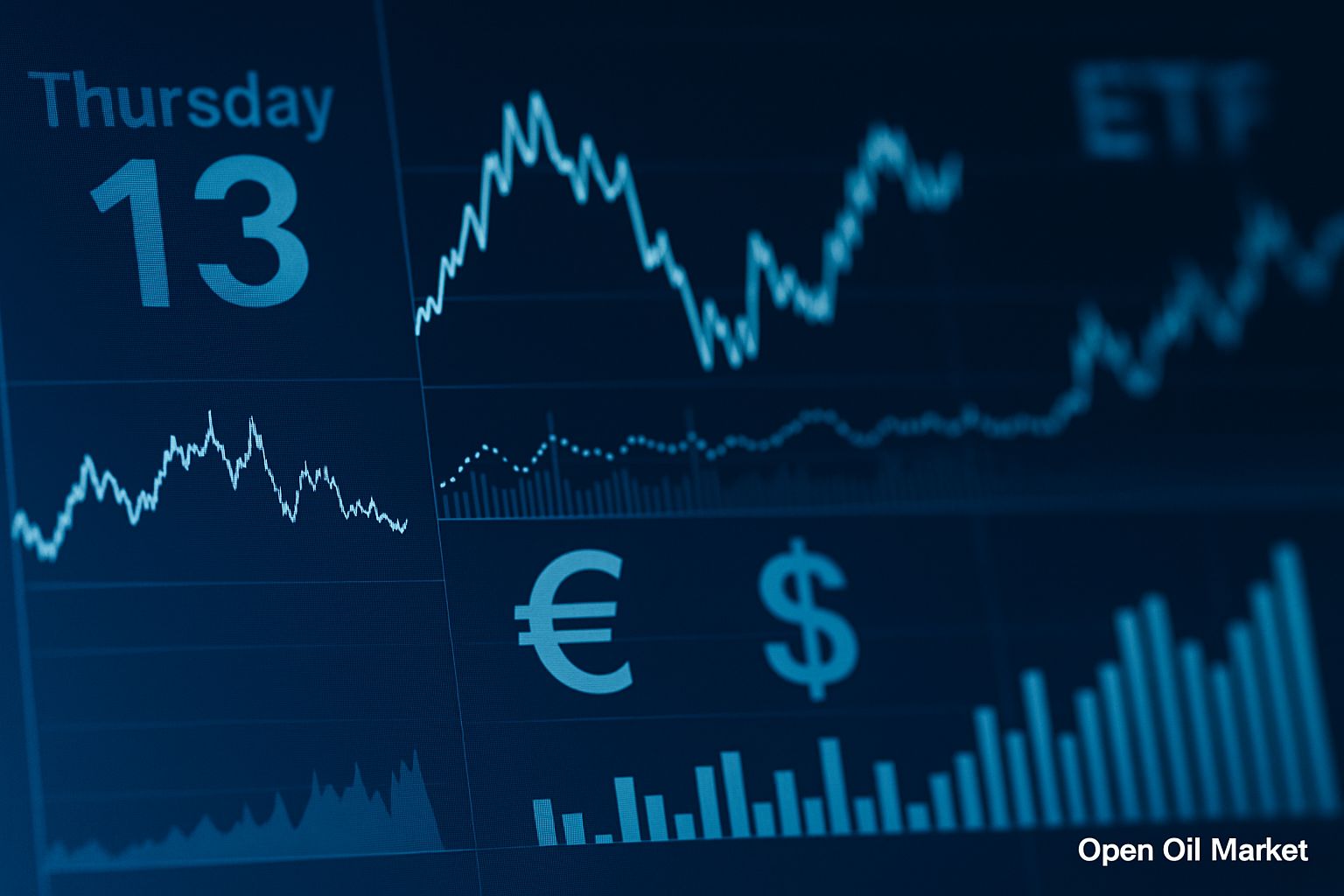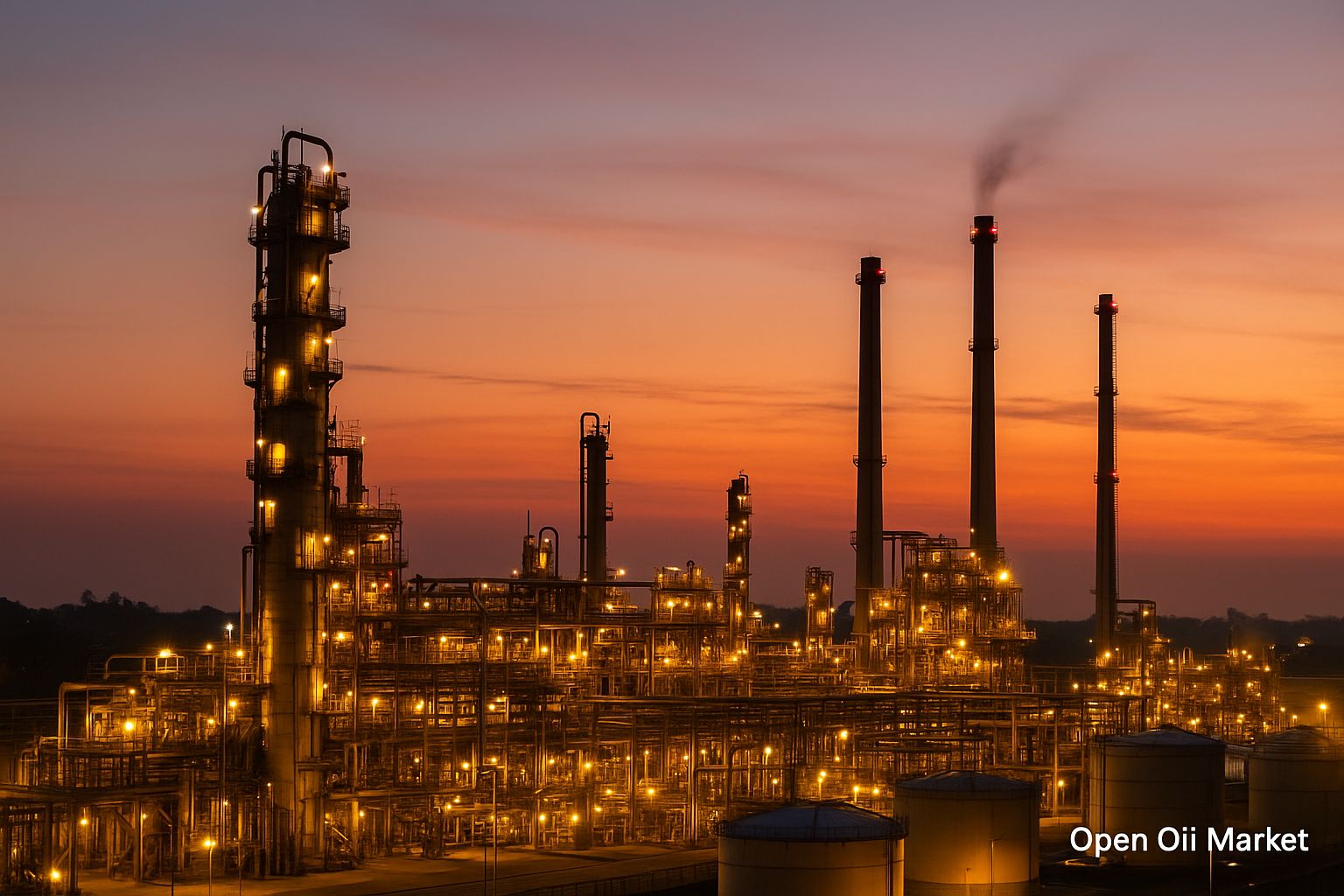
Current Energy Sector News as of 21st October 2025: Brent Oil Prices Drop Below $60, Stabilisation of Fuel Market in Russia, Record Gas Reserves and Growth in Renewable Energy Investments.
As of 21st October 2025, the global fuel and energy sector is experiencing a combination of intense geopolitical confrontations and relative stability in raw material markets. The sanctions confrontation between Russia and the West remains unabated: the United Kingdom has imposed new restrictions on major Russian oil and gas companies, while the European Union has approved a phased ban on Russian gas imports starting from 2026. An unexpected factor has been India's position: under pressure from partners, New Delhi has announced its readiness to gradually reduce imports of Russian oil – a move that could significantly alter global oil flows.
Meanwhile, raw material markets exhibit a moderately calm dynamic. Oil prices remain near multi-month lows due to anticipated oversupply by the end of the year: Brent has fallen below $60 per barrel, and WTI is trading around $56–58. Oil quotes are approximately 10% lower than a month ago. The gas market enters winter with record fuel reserves in Europe, providing a comfortable backdrop for consumers (unless extreme cold alters these projections). The global energy transition continues to accelerate: investments in renewable energy are reaching record levels, although traditional resources (oil, gas, coal) still constitute the foundation of energy supply.
In Russia, emergency measures to stabilise the domestic fuel market are yielding results: fuel shortages are gradually being resolved, wholesale prices have retreated from peak levels, although remote regions still require attention. At the "Russian Energy Week 2025" forum (Moscow, 15–17 October), one of the main topics was the provision of energy resources for the domestic market and the reorientation of exports under sanctions. Below is an overview of current events and trends in the oil, gas, electricity, coal, and renewable segments of the energy sector as of today.
Oil Market: Sanctions Pressure and Price Lows
Global oil prices remain at their lowest levels since the beginning of summer. Brent has slipped below $60 per barrel, while WTI hovers around $56–58, approximately 10% cheaper than a month ago. The market has reverted to a downward trend after a brief rally in September: it is expected that by the fourth quarter, supply will exceed demand. On the other hand, persistent geopolitical tensions are preventing prices from plummeting further, maintaining a slight risk premium.
- Production Rising, Demand Slowing. OPEC+ and other producers are increasing oil production, while the growth in global demand is slowing. The alliance is raising quotas from November (approximately +130,000 barrels per day), while the US and Brazil approach record production levels. The International Energy Agency has reduced its forecast for oil consumption growth in 2025 to approximately +0.7 million barrels per day (down from over +2 million in 2023). The surplus supply and growing inventories continue to weigh on prices.
- Sanctions and New Risks. The escalation of sanctions against Russia keeps market uncertainty alive: a complete embargo on Russian oil and suppression of "shadow" exports are under discussion. Simultaneously, India – a key buyer – may reduce imports of Russian oil under Western pressure. If lost, the Indian market would further amplify pressure on Russian exports, but global supplies are likely to be restructured through other regions. As a result, around $60 per barrel serves as the "floor" for Brent: the surplus prevents prices from rising while geopolitical risks discourage them from falling much lower.
The oil market is balancing between fundamental and political factors. The oversupply keeps prices low, yet the sanctions confrontations and possible shifts in the market (such as the departure of Indian buyers) prevent them from dropping significantly. Expectations for the coming months indicate relatively low oil prices will remain in place.
Natural Gas: Record Reserves and Eastern Turn
The gas market is entering winter in a favourable state. European gas storage facilities are over 95% full (5–7% above last year's levels) – stabilising prices in the EU at around €30–35 per MWh. The risk of a repeat of last year's gas crisis has significantly decreased, although much will depend on the upcoming winter and the uninterrupted supply of LNG.
- Europe is Prepared for Winter. Record gas reserves create a solid buffer for cold conditions, while demand in the EU remains subdued due to a weak economy and high generation from renewable sources. Even during extreme cold, a significant portion of demand can be met from storage resources, reducing the likelihood of shortages.
- Export to the East. Russia is redirecting gas flows towards Asia following a dramatic reduction in exports to Europe. Supplies via the "Power of Siberia" pipeline to China have reached record volumes (approximately 22 billion m³ per year), and the "Power of Siberia 2" project is being prepared to partially replace the lost European market. Concurrently, Europe has ramped up LNG purchases from other suppliers, compensating for the cessation of imports from Russia. Global gas flows have already been restructured: the EU can effectively manage without Russian gas, while Russia strengthens its position in Asian markets. Currently, a combination of moderate demand and high reserves keeps gas prices comfortable for consumers.
Thus, the global gas sector is entering winter with a significant buffer. Unprecedented levels of European reserves and the redirection of flows provide a basis for price stability during winter, unless extreme cold or other unforeseen events occur.
Electric Power: Demand Rising, Networks Modernising
Global electricity consumption in 2025 is approaching historical peaks (for the first time exceeding 30,000 TWh per year). Major economies such as the USA and China are reporting record generation, while rapid demand growth in many countries across Asia, Africa, and the Middle East is associated with industrialisation and population growth. This situation necessitates accelerated investments to avoid capacity shortages and disruptions in power supply.
Renewable Energy: Investment Boom and Growth Challenges
The renewable energy sector continues its rapid expansion, solidifying its commitment to a "green" transition. In 2025, a record installation of solar and wind capacities is anticipated, supported by large-scale government incentives in leading economies. However, the rapid development of renewable energy comes with challenges, as traditional resources still provide the backbone of energy systems.
- Records and Challenges. Approximately 30% of global electricity in 2025 will be generated from renewables, a record figure. In the EU, the share of clean generation has already surpassed 45%, while in China, it is approaching 30%. However, the high demand for equipment has led to rising costs for components (polysilicon, rare earth metals), and the development of networks and storage systems does not always keep pace with the commissioning of new plants. Regulatory uncertainty and market volatility also create risks for new projects.
New technological solutions – from more efficient batteries to hydrogen energy – should help overcome the growth limitations of renewable energy. With sustained government support and a focus on market risks, "green" energy will continue to increase its contribution to the global energy balance.
Coal Market: High Asian Demand and Coal Phase-Out
In 2025, the global coal market reflects opposing trends. Asia continues to experience strong demand for coal, while developed countries are accelerating their phase-out of this fuel in line with climate policies.
In summer, Eastern Asia witnessed a surge in coal imports: for example, in August, China, Japan, and South Korea imported almost 20% more coal than in July. This increase is attributed to heightened electricity generation during a period of intense heat and temporary production reductions at certain mines (in China, safety inspections halted the operations of several facilities, necessitating increased imports for power plants).
Though active demand in Asia currently supports global coal trade, the strategic direction is shifting towards a reduced reliance on this fuel. New renewable energy capacities and stringent environmental restrictions will inevitably phase out coal generation in the long term. The sector's challenge is to balance the current energy needs with long-term decarbonisation goals.
Russian Fuel Market: Stabilisation and Strict Control
In autumn 2025, the internal market for petroleum products in Russia is gradually stabilising after a sharp crisis at the end of summer. In September, many regions faced shortages of gasoline and diesel due to a spike in seasonal demand and reduced supplies from refineries. The causes included scheduled repairs at several plants, unscheduled emergency stoppages, and drone attacks on oil infrastructure. By mid-October, the government managed to eliminate the primary fuel shortage through emergency measures – ranging from an export ban to subsidising supplies at petrol stations. Wholesale prices for gasoline and diesel have retreated from peak levels, and independent petrol stations have resumed full operations in most regions. Nonetheless, the situation in remote areas has not fully normalised, requiring the authorities to maintain special oversight. To prevent a new crisis, the range of stabilisation measures has been extended and enhanced:
- Export and Prices Under Control. The complete ban on gasoline exports, imposed at the end of September, has been extended until 31st December 2025. Restrictions on diesel exports are also maintained: independent traders are prohibited from exporting, and oil companies with refineries are permitted to export only in strictly limited volumes. Simultaneously, the damping mechanism supporting refineries remains in place – they continue to be compensated for the difference between export and domestic fuel prices, thus retaining incentives to supply the domestic market. Until mid-2026, tariffs on imported gasoline and diesel fuel have been abolished to facilitate the potential sourcing of supplies from abroad if necessary. The Federal Antimonopoly Service monitors prices at petrol stations, and the government is still avoiding direct price freezing, focusing instead on market mechanisms and targeted measures.
The measures taken have already shown effects: gasoline and diesel output has returned to pre-crisis levels (facilitated by the completion of unscheduled repairs at refineries and the redirection of some exports to the domestic market). In most regions, independent filling stations are once again supplied with fuel in the required quantities. The authorities hope to navigate the winter period without supply disruptions, while also remaining ready to intervene promptly if necessary. At a systemic level, the task is set to modernise the fuel sector – developing storage and logistics infrastructure, implementing digital management of resource distribution, and enhancing the depth of oil processing. These directions were discussed at the REW-2025 forum and aim to ensure the long-term sustainability of the market.
Thus, the Russian energy sector approaches winter under stringent government control and with support in the form of subsidies. The range of measures – from export restrictions to incentives for refineries – raises hopes that a repeat of the fuel crisis can be avoided even amid external pressures. Market participants will closely monitor the effectiveness of these steps, which are crucial for maintaining investor and consumer confidence in the stability of the country's fuel and energy complex.




